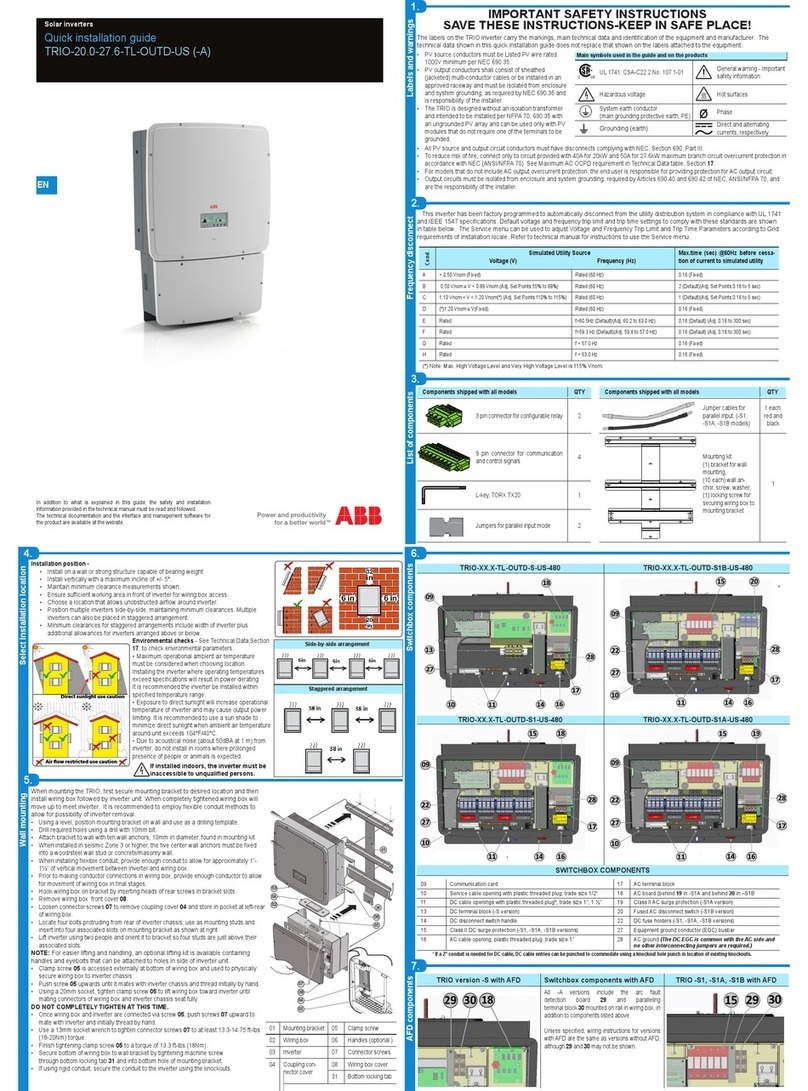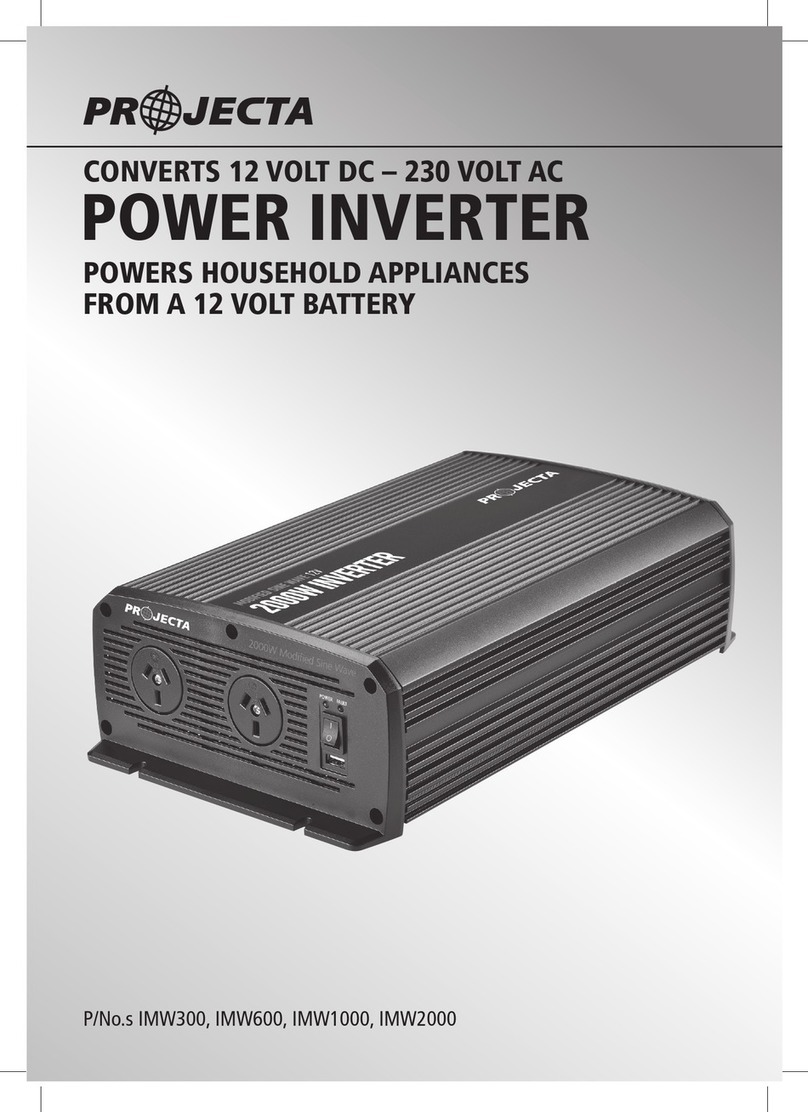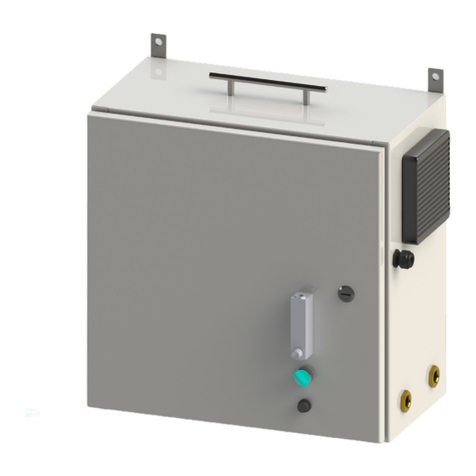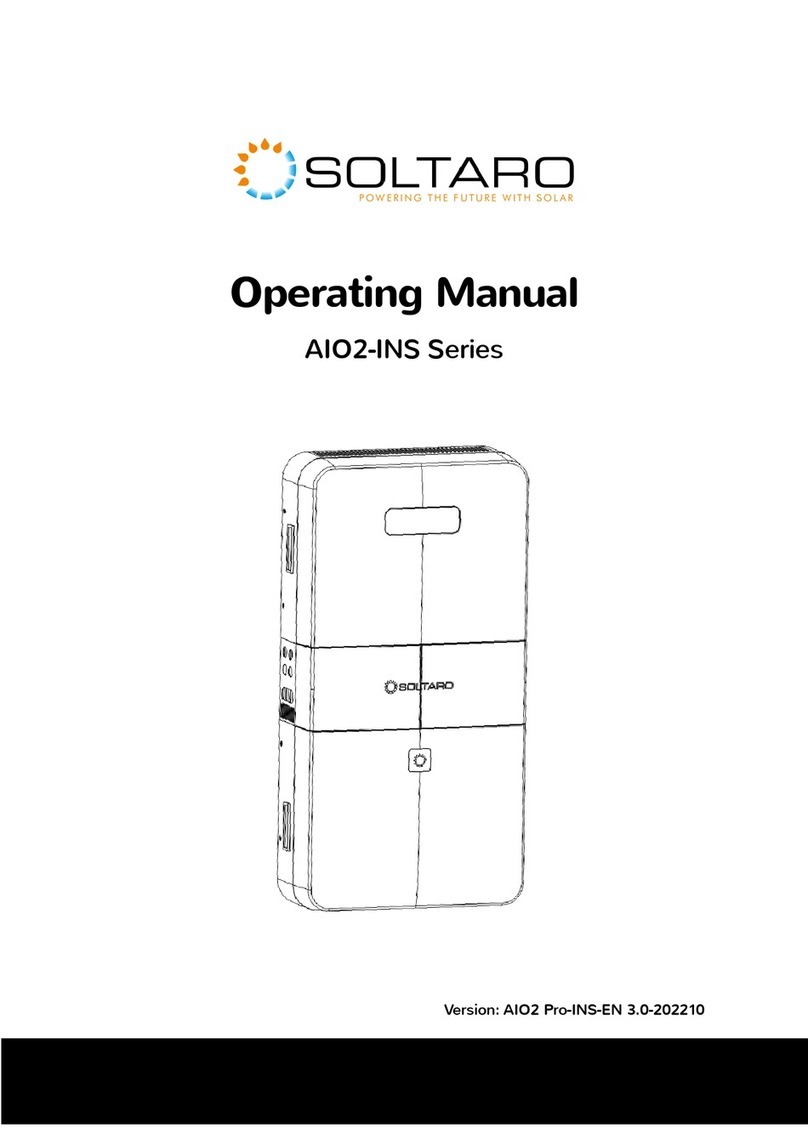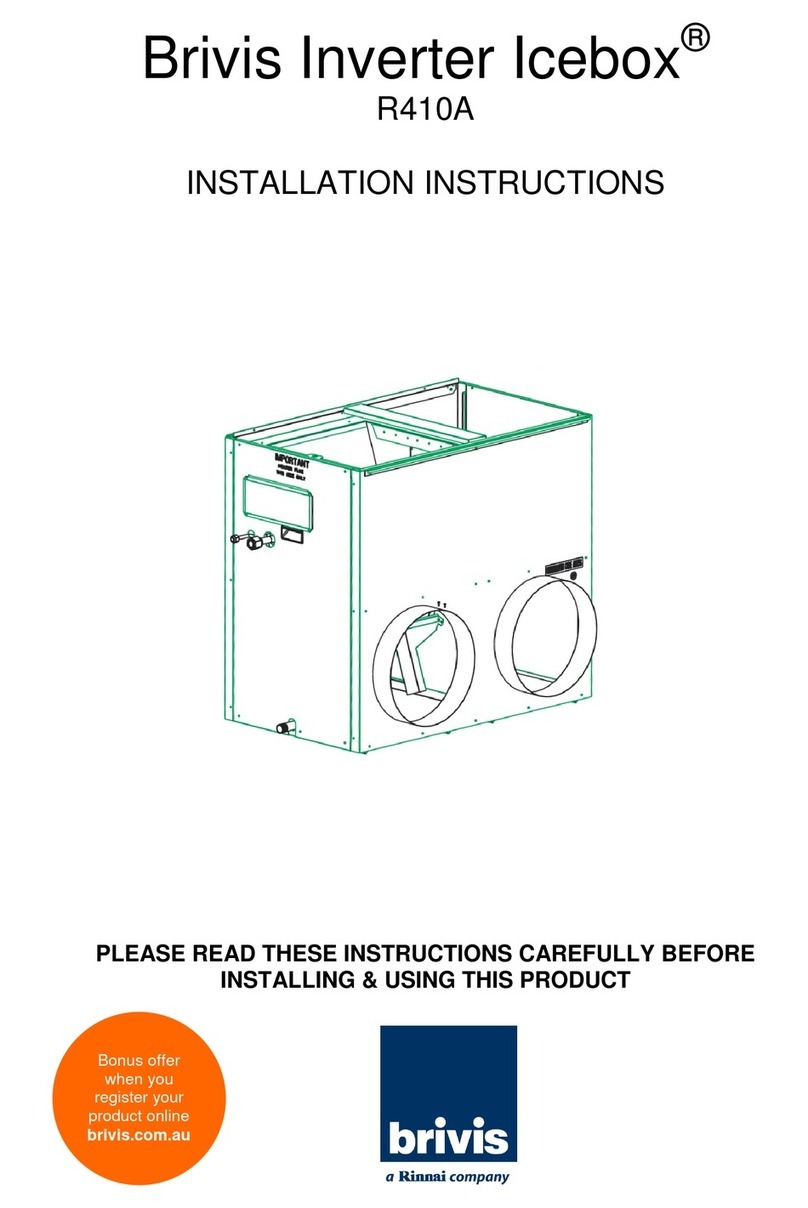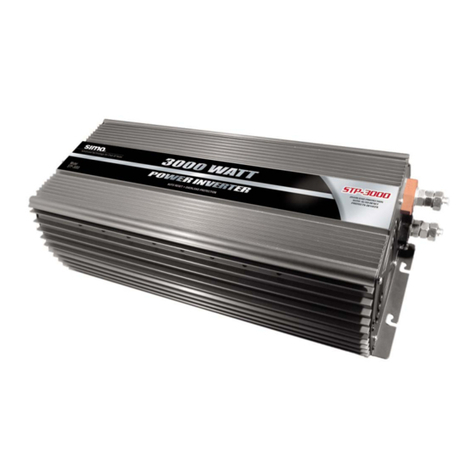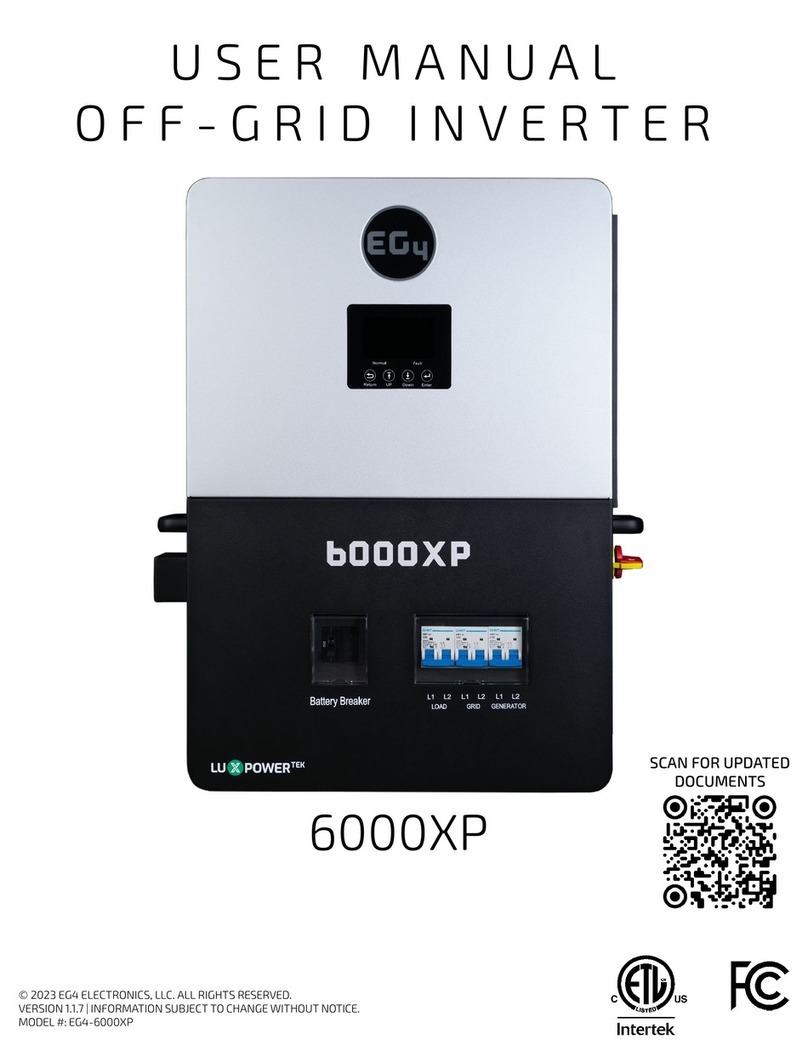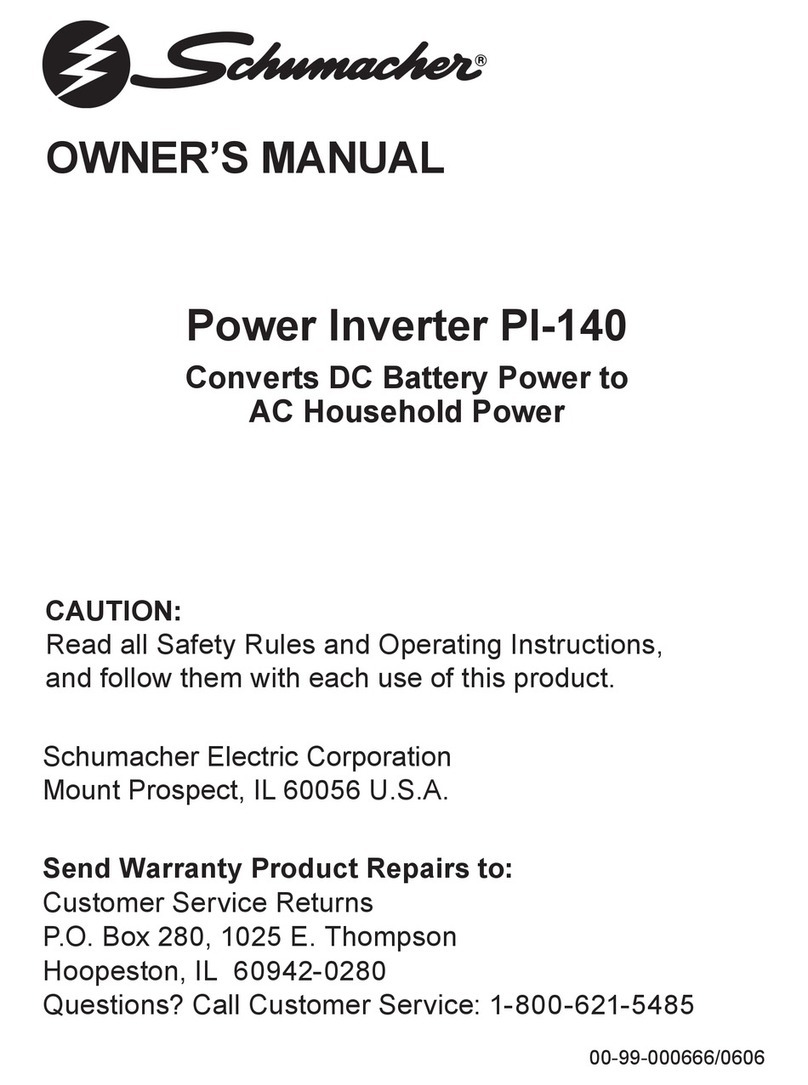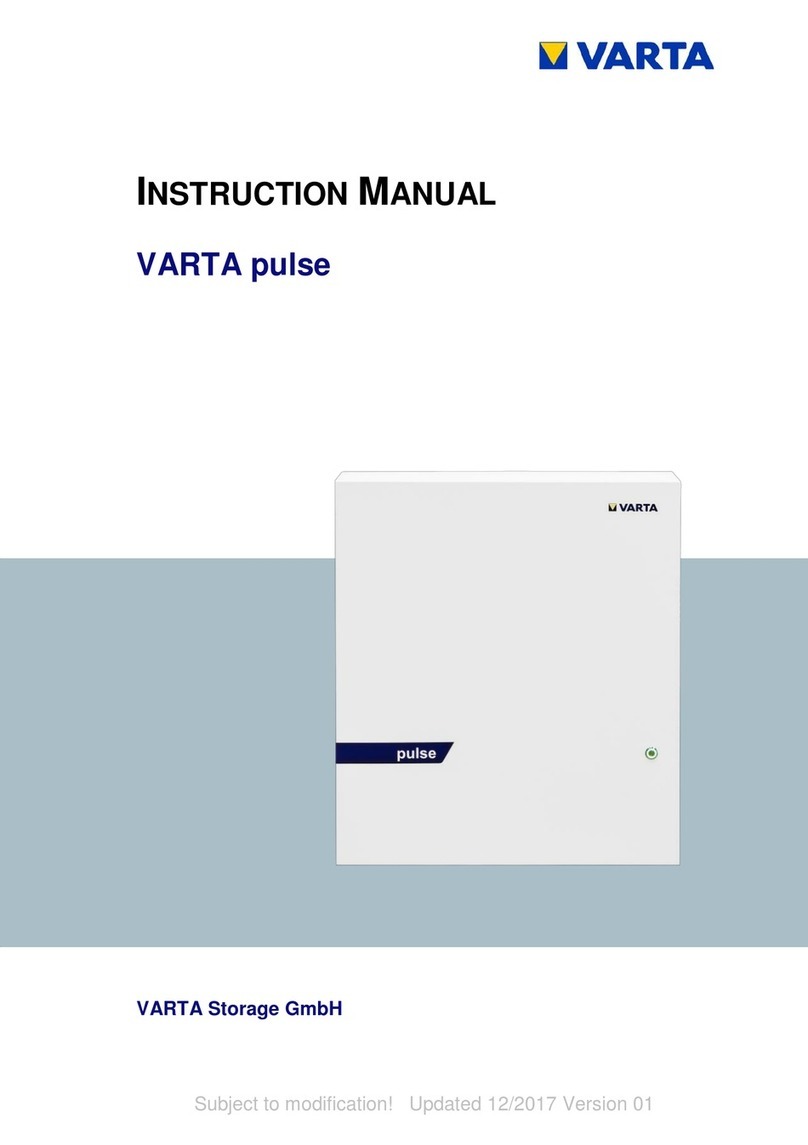Gentherm P-5100 User manual

WARNING: If the information in this
manual is not followed exactly, a fire or
explosion may result causing property
damage, personal injury or loss of life.
Do not store or use gasoline or other
flammable vapors and liquids near this or
any other appliance.
WHAT TO DO IF YOU SMELL GAS:
•Do not try to light any appliance.
•Do not touch any electrical switch; do not
use any phone in your building.
•Immediately call your gas supplier from a
neighbour’s phone. Follow the gas
supplier’s instructions.
•If you cannot reach your gas supplier, call
the fire department.
Installation and service must be performed
by a qualified installer, service agency or the
gas supplier.
WARNING: Improper installation,
adjustment, alteration, service or maintenance
can cause injury or property damage. Read the
installation, operating and maintenance
instructions thoroughly before installing or
servicing this equipment.
WARNING: For Outdoor Use Only.

AVERTISSEMENT: Si l’information de ce
manuel n’est pas suivie exactement, un
incendie ou une explosion peut résulter
entraînant des dégâts matériaux, des
blessures ou la perte de vie.
Ne pas entreposer ou utiliser de l’essence,
d’autres liquides ou vapeurs inflammables à
proximité de cet appareil ou d’aucun autre
appareil.
QUE FAIRE SI VOUS SENTEZ LE GAZ:
•N’allumez aucun appareil.
•Ne touchez aucun commutateur
électrique; n’utilisez pas le téléphone de
votre bâtiment.
•Appelez immédiatement votre fournisseur
de gaz d’un téléphone dans un bâtiment
voisin, si possible. Suivez les instructions
du fournisseur de gaz.
•Si vous ne pouvez pas atteindre votre
fournisseur de gaz, appelez le service
d’incendie.
L'installation et le service doivent être
effectués par un installateur qualifié, une
agence de service ou le fournisseur de gaz.
AVERTISSEMENT: L’installation inexacte,
l’ajustement, le changement, le service ou
l’entretien peuvent causer des dommages ou
des dégâts matériaux. Lisez les instructions
d’installation, d’opération et d’entretien
complètement avant d’installer ou entretenir
cet équipement.
AVERTISSEMENT: Pour l’Usage Extérieur
Seulement.

62128 Rev 10
#16, 7875 - 57th Street SE
Calgary, Alberta Canada T2C 5K7
Main: +1 403 236 5556
Fax: +1 403 236 5575
www.genthermglobalpower.com
NOTICE TO INSTALLER: These instructions shall be left with the consumer
to retain them for future reference.


Gentherm Global Power Technologies I
TABLE OF CONTENTS
1ABOUT THIS MANUAL......................................................................................................1
1.1 HEALTH AND SAFETY .................................................................................................1
1.2 TECHNICAL TERMS ....................................................................................................1
2QUICK START PROCEDURE ..............................................................................................3
2.1 INSTALLATION ..........................................................................................................3
2.2 START UP .................................................................................................................3
2.3 ADJUSTMENT ............................................................................................................4
2.4 PERFORMANCE LOG ...................................................................................................4
3TECHNICAL SPECIFICATIONS...........................................................................................5
3.1 OVERVIEW................................................................................................................5
3.2 OPTIONS ..................................................................................................................5
3.3 WEIGHTS AND MEASURES..........................................................................................7
3.4 SYSTEM....................................................................................................................8
3.5 DATA PLATE..............................................................................................................8
3.6 FUEL CONSUMPTION..................................................................................................9
3.7 STANDARD SPECIFICATION FOR GASEOUS FUEL ........................................................10
4PROCESS DESCRIPTION ................................................................................................11
4.1 MODEL P-5100 THERMOELECTRIC GENERATOR........................................................... 11
4.2 CONVERTER LIMITER ...............................................................................................16
4.3 TEMPERATURE COMPENSATION................................................................................. 17
4.4 BLOCKING DIODE....................................................................................................18
4.5 OPTIONAL CATHODIC PROTECTION INTERFACE SYSTEM .............................................. 19
4.6 OPTIONAL REMOTE START SYSTEM (TEG CONTROLLER BOARD) ...................................19
4.7 INTAKE AND EXHAUST FLAME ARRESTORS .................................................................23
4.8 OPTIONAL VSR TERMINAL BLOCK ..............................................................................24
5INSTALLATION .............................................................................................................25
5.1 PRECAUTIONS.........................................................................................................25
5.2 TOOLS REQUIRED.................................................................................................... 25
5.3 UNPACKING ............................................................................................................26
5.4 ASSEMBLING .......................................................................................................... 26
5.5 MOUNTING .............................................................................................................27
5.6 SUPPLYING FUEL ..................................................................................................... 28
5.7 CONNECTING CUSTOMER LOAD ................................................................................ 30
5.8 INSTALLATION OF OPTIONAL CP INTERFACE SYSTEM ..................................................32
6STARTUP AND SHUTDOWN ............................................................................................34
6.1 BEFORE STARTING ..................................................................................................34
6.2 TEG START-UP ........................................................................................................34

Gentherm Global Power Technologies II
6.3 SHUTDOWN ............................................................................................................34
7POWER OUTPUT EVALUATION ........................................................................................ 35
7.1 REQUIRED Vset OR SETUP POWER AT SITE ..................................................................35
7.2 CHECKING Vset OR SETUP POWER ..............................................................................37
8ADJUSTMENT ............................................................................................................... 40
8.1 POWER OUTPUT ADJUSTMENT ..................................................................................41
8.2 ADJUSTMENT OF C/L................................................................................................ 45
8.3 ENABLING TEMPERATURE COMPENSATION ................................................................. 46
8.4 ADJUSTMENT OF OPTIONAL CP INTERFACE SYSTEM .................................................... 46
8.5 ADJUSTMENT OF THE OPTIONAL REMOTE START SYSTEM (TEG CONTROLLER) ............... 48
9MAINTENANCE .............................................................................................................49
9.1 RECOMMENDED PERIODIC MAINTENANCE..................................................................49
9.2 FUEL SYSTEM MAINTENANCE ....................................................................................51
9.3 BURNER MAINTENANCE............................................................................................ 54
9.4 SI SYSTEM MAINTENANCE........................................................................................ 56
9.5C/L EXAMINATION ................................................................................................... 60
9.6 POWER UNIT EXAMINATION ..................................................................................... 60
10 TROUBLESHOOTING .....................................................................................................63
11 PART LIST ................................................................................................................... 65
11.1 MODEL P-5100 TEG .................................................................................................66
11.2 MODEL P-5100 BURNER ...........................................................................................69
11.3 MODEL P-5100 FUEL SYSTEM.................................................................................... 71
11.4 MODEL P-5100 OPTIONAL STAINLESS STEEL FUEL SYSTEM .......................................... 72
11.5 MODEL P-5100 ELECTRICAL...................................................................................... 74
12 CATHODIC PROTECTION OPTION.................................................................................... 76
12.1 INTRODUCTION....................................................................................................... 76
13 HEAT RECOVERY SYSTEM (HRS) OPTION.........................................................................82
13.1 INTRODUCTION....................................................................................................... 82
13.2 INSTALLATION ........................................................................................................82
13.3 TEG OPERATION......................................................................................................82
13.4 MODEL P-5100 HRS CONFIGURATION PARTS ..............................................................83
13.5 MODEL P-5100 HRS BURNER PARTS ..........................................................................84
14 TEG PERFORMANCE LOG ............................................................................................... 85

Gentherm Global Power Technologies III
TABLE OF FIGURES
Figure 1 –Overall Dimensions of the P-5100 TEG ......................................................... 7
Figure 2 - Data Plate................................................................................................. 9
Figure 3 - P-5100 TEG General Assembly ...................................................................11
Figure 4 –P-5100 Fuel System General Assembly .......................................................12
Figure 5 –Burner General Assembly ..........................................................................14
Figure 6 –Model P-5100 Power Unit Electrical Output Characteristics.............................15
Figure 7 - C/L General Assembly ...............................................................................16
Figure 8 - CP Interface System General Assembly .......................................................18
Figure 9 - TEG Controller Assembly............................................................................20
Figure 10 –Assembling the P-5100 TEG .....................................................................26
Figure 11 –Model P-5100 Mounting Dimensions..........................................................27
Figure 12 –Applying Thread Sealant..........................................................................28
Figure 13 –Setting up the P-5100 TEG ......................................................................29
Figure 14 - Wiring Diagram P-5100 for 12 or 24 V .......................................................30
Figure 15 - Wiring Diagram P-5100 TEG for 12 or 24V with optional TEG Controller .........31
Figure 16 - Customer Load Connections .....................................................................32
Figure 17 –CP Installation........................................................................................33
Figure 18 - Vset and Setup Power Versus Ambient Temperature .....................................37
Figure 19 - Vset Versus Time After Ignition, Typical Response ........................................38
Figure 20 - Change in Fuel Gauge Pressure Versus Elevation Above Mean Sea Level ........40
Figure 21 - Change in Vset Versus Air-Shutter Adjustment.............................................41
Figure 22 - Change in Vset Versus Fuel Pressure Adjustment..........................................44
Figure 23 - CP Interface System, Series Wiring Diagram ..............................................47
Figure 24 - CP Interface System, Parallel Wiring Diagram.............................................47
Figure 25 –Pressure Regulator .................................................................................52
Figure 26 - Burner Assembly Cross Section.................................................................55
Figure 27 - Electrode Protrusion from Air Box Lid.........................................................58
Figure 28 - Momentary Open Circuit Diagram..............................................................61
Figure 29 - Model P-5100 TEG...................................................................................66
Figure 30 - Model P-5100 Burner...............................................................................69
Figure 31 - Model P-5100 Fuel System .......................................................................71
Figure 32 - Model P-5100 SS Fuel System ..................................................................72
Figure 33 - Model P-5100 Electrical............................................................................74
Figure 34 - Cathodic Protection Interface Cabinet ........................................................76
Figure 35 - CP Interface System, Series Wiring Diagram ..............................................77
Figure 36 - CP Interface System, Parallel Wiring Diagram.............................................78
Figure 37 - Cathodic Protection System Parts Identification ..........................................79
Figure 38 - Parts Table.............................................................................................80
Figure 39 - HRS Option Overview ..............................................................................82
Figure 40 - HRS Configuration...................................................................................83
Figure 41 - Model P-5100 HRS, Burner .......................................................................84

ABOUT THIS MANUAL
Gentherm Global Power Technologies Page 1
1ABOUT THIS MANUAL
This manual provides instructions for the operation and maintenance of the model P-5100
Thermoelectric generator.
1.1 HEALTH AND SAFETY
Correct operation and maintenance according to this manual is critical for proper equipment
function and safety. Keep the following in mind when using these instructions.
1.1.1 Warnings
Throughout this manual you will notice paragraphs preceded by the text Warning. It is
imperative that the advice in these paragraphs be adhered to, as failure to do so may result
in personal injury or death and possible damage to the equipment.
1.1.2 Cautions
Throughout this manual you will notice paragraphs preceded by the text Caution. It is
imperative that the advice in these paragraphs be adhered to, as failure to do so may result
in damage to the equipment.
1.1.3 Trained Operators
Personnel performing installation, operation, and maintenance work should be properly
trained in such functions.
1.2 TECHNICAL TERMS
An operator should be familiar with technical terminology. Terms of particular significance,
defined for the model P-5100, are as follows:
Thermoelectric Generator (TEG): A device that produces electrical power through the
direct conversion of heat energy to electrical energy.
Power Unit (PU): The hermetically sealed portion of the TEG that contains the
thermoelectric materials and cooling fins.
Rated Power: Model P-5100 TEG produces 100 W when operating in an ambient
temperature of 20ºC (68ºF). With the fuel flow held constant TEGs operating in ambient
temperatures higher than 20ºC (68ºF) will see power output efficiency reduce, 0.4 W per ºC
(0.2 W per ºF) of temperature change up to a maximum ambient temperature of 55ºC
(130ºF). Conversely for temperatures lower than 20ºC (68ºF) power output efficiency will
increase by 0.4 W per ºC (0.2 W per ºF) of temperature change.
Set-up Power: Power from the power unit for a specific ambient temperature. It is derived
from voltage across a precision load, also known as Vset.

ABOUT THIS MANUAL
Gentherm Global Power Technologies Page 2
Set-up Voltage: Vset Voltage from the power unit for a specific ambient temperature, which
is proportional to set-up power. Fuel flow to the burner is adjusted so that proper voltage
exists, necessary temperature difference within the power unit maintained, to deliver
required power.
Open Circuit Voltage: Voltage at the terminals of the power unit when no current is flowing,
i.e. open circuit, which is related to the temperature across the thermoelectric materials
inside the power unit.
When a power unit lead is suddenly disconnected, breaking the circuit to the load, the voltage
measured across the power unit leaps up to a new value. This is known as the momentary
open circuit voltage (Voc).
Measured Vset: Vset measured across the precision load on the output of the electronics
without a customer load connected using a voltmeter.
Required Vset: Vset needed to achieve rated power for the present ambient temperature.
CP (Cathodic Protection): Thermoelectric generators are used in impressed current
systems for Cathodic corrosion protection of metallic structures such as pipelines.
CP Interface System: An assembly of electrical components system that acts as an
interface between the TEG and the CP load, which also provides for adjustment and
monitoring of power to the CP load.
Converter/Limiter (C/L): A specific electronic device attached between the generator and
the load that converts one level of DC voltage to another and limits the power unit voltage.
Manual Shutoff Valve: A manually operated valve in the gas line for completely turning on
or shutting off the gas supply to the TEG.
Solenoid Valve (SV): A electrically actuated valve that controls the gas supply to the
burner. This Valve is operated by the Ignition Control Module.

QUICK START PROCEDURE
Gentherm Global Power Technologies Page 3
2QUICK START PROCEDURE
This section gives the key steps for setting up the TEG. It is for the operator who is already
familiar with operating the TEG, having successfully completed Gentherm Global Power
Technologies (GPT) TEG training course, and being a qualified service person with reasonable
knowledge and experience with industrial fuel and electrical equipment.
2.1 INSTALLATION
Follow these steps to install the TEG:
1. Unpack the TEG from its shipping crate, keep the crate until the TEG is operational.
Locate and identify the following items that were shipped with the P-5100 TEG:
•1 Fin Duct.
•1 Rain Cap.
•1 Exhaust Stack with Clamp.
•1 Thread Sealing Compound.
•7 Screws, #8 32 × 1/4 in. long, one spare.
•7 Washers, #8 External Lock, one spare.
NOTE:
Inspect the TEG for damage that may have occurred during shipping. Please report
any damage as soon as possible as it may make the generator inoperable. Check
with the factory before starting a damaged TEG.
2. Assemble the TEG as shown in Figure 3 and mount it on a firm and stable base,
sufficiently high above ground level to prevent the TEG from being inundated with
water.
3. Connect the fuel supply to the manual shutoff valve, 1/4” FNPT, using the thread
sealant provided. Leak check the complete fuel supply system from the fuel supply
line to the burner inlet using a commercial leak detector fluid such as Snoop®.
4. Connect the customer load:
•connect the load to terminals 7 (+) and 8 (-);
•C/L for CP applications connect the cathode and anode wires to the external CP
interface box.
2.2 START UP
Follow these steps to start the TEG:
1. Ensure the battery is connected.
2. Open the manual shutoff valve.
NOTE:
Once the TEG is started re-closing the manual shutoff valve will shut it off.

QUICK START PROCEDURE
Gentherm Global Power Technologies Page 4
3. If the optional TEG controller board is installed, press the Start (S1) button or send a
SCADA Start signal to the TEG controller board.
NOTE:
Once the TEG is started pressing the Stop (S2) button or sending a SCADA Stop
signal to the TEG controller board will stop it.
4. The Spark Ignition (SI) system should begin clicking after one second and the sound
of combustion heard within 7 seconds. If the burner does not ignite wait 25 seconds
for a second or third ignition trial. After a third trial the ignition control system will go
into lockout mode.
WARNING!
When the TEG is operating, surface temperatures near the
thermopile, burner, exhaust stack and around the cooling
fin duct may be more than 100°C. Avoid contact of skin
and clothing with these areas when operating in and
around the TEG
2.3 ADJUSTMENT
Follow these steps to adjust the TEG:
1. Disconnect the customer load from the TEG, terminals 7 (+) and 8 (-) of TB-1 and
allow to stabilize for 15 minutes.
2. Measure the Vset voltage between terminals 5 (+) and 6 (-).
3. Check the measured Vset value rises to that required, as per Power Output Evaluation
section. Measured Vset will level off after 1-hour from ignition. If the measured value
is not in its normal operating range, then adjust the power output as per the
Adjustment section.
CAUTION!
Do not allow measured Vset to exceed required Vset,
determined in the Power Output Evaluation section,
otherwise overheating may cause irreparable damage to
the power unit.
NOTE:
Details for adjusting the optional L/C and CP interface systems, if applicable,
are in the Adjustment section.
2.4 PERFORMANCE LOG
Your TEG is now operating successfully, making available continuous electrical power to the
load. It is recommended that a record be kept of the TEG’s performance and maintenance
history. Each time adjustments are made, or servicing is carried out the details should be
recorded. A blank TEG Performance Log is provided at the end of this manual.

TECHNICAL SPECIFICATIONS
Gentherm Global Power Technologies Page 5
3TECHNICAL SPECIFICATIONS
This section gives the technical specifications for the Model P-5100 Thermoelectric generator.
3.1 OVERVIEW
The Model P-5100 Thermoelectric Generator (TEG) converts heat directly into electricity with
no moving parts. It is a reliable, low maintenance source of DC electrical power for any
application where regular utilities are unavailable or unreliable.
The Model P-5100 Thermoelectric Generator provides 127 Watts of electrical power from the
power unit at the beginning of life and at an ambient temperature of 20ºC. This power is
generated at a nominal 6 Volts, which can then be converted to other voltages using the
voltage converter. The converter is 83% efficient which provides 104 Watts of net electrical
power with a 12 Volt/24 Volt converter.
If the generator is to be operated at load conditions that force the output voltage to vary
significantly from 5.5 Volts, then less than the rated power will be available to the load.
3.2 OPTIONS
Mounting Stand: The P-5100 can be conveniently mounted on any platform with four holes
spaced as shown in Figure 11. It is important to mount the TEG at a height sufficient to
prevent direct flooding or heavy snowfall from interfering with the flow of cooling air. A
mounting stand is available from GPT.
Cathodic Protection Interface (CP): The Cathodic Protection Interface option provides a
termination point of cathode and anode cables up to 9 mm (00 AWG) in size, a meter to
monitor the voltage and current of the CP circuit and an adjustable resistor to control the
output power.
Remote Start System (TEG Controller Board): The Remote Start option provides a
method of starting and stopping the TEG either locally or remotely, using on-board buttons,
SCADA signal interface or system measurements.
Optional VSR Terminal Block: The optional VSR terminal block is an additional wiring
harness that provides the VSR and current measurement connection on a terminal block
inside the TEG Cabinet as opposed to directly connecting to the electronic circuit board.
NOTE:
Specifications shown are for standard configurations. Gentherm Global Power
Technologies’ Integrated Systems Engineering Department is available to
design installations meeting different specifications including custom
voltages, fuel supply systems and nonstandard operating temperatures.

TECHNICAL SPECIFICATIONS
Gentherm Global Power Technologies Page 6
Power output
Power Ratings at the beginning of life,
20º C, 750 m above sea level available at
the terminal strip including reverse
current diode.
100 Watts @ 14.1 Volts
100 Watts @ 28 Volts
Electrical
Adjustment
12 V 12–18 Volts
24 V 24-30 Volts
Reverse Current Protection
Yes, diode board is standard.
Output
Terminal block which accepts up to 8
AWG wire. Opening for 3/4” conduit in the
base of the cabinet
Fuel
Natural Gas
9.4 m3/day (332 ft3/day) of Std. 1000
BTU / SCF (37.7 MJ/Sm3) gas
High BTU Natural Gas
6.3 m3/day (222 ft3/day) of 1500
BTU / SCF (56.5 MJ/Sm3) gas
7.8 m3/day (277 ft3/day) of 1200
BTU / SCF (45.2 MJ/Sm3) gas
Propane
13.8 L/day (3.6 gal/day)
Maximum Supply Pressure
344 kPa (50 psig)
Minimum Supply Pressure
103 kPa (15 psig)
Fuel Connection
1/4” MNPT
Environmental
Ambient Operating Temperature
Continuously Running TEG
Max. 55º C (130º F) Min. -40º C (-40 ºF)
Operating Conditions
Unsheltered Operation
Materials of Construction
Cabinet
304 Stainless Steel
Cooling Type
Natural Convection
Burner
Meeker type, Inconel 600
Fuel System
Brass, Aluminum & Stainless Steel

TECHNICAL SPECIFICATIONS
Gentherm Global Power Technologies Page 7
3.3 WEIGHTS AND MEASURES
The following table gives the overall dimensions and weights of the TEG.
Depth
790 mm (31.11 in.)
Width
309 mm (12.17 in.)
Height
991 mm (39.12 in.)
Net Weight
60 kg (132 lb.)
Shipping Weight
83 kg (183 lb.)
Mounting Holes
267 mm wide × 457 mm deep (10.50 in. × 18.00 in.)
Mounting Hole Diameter
790 mm (31.11 in.)
Figure 1 –Overall Dimensions of the P-5100 TEG

TECHNICAL SPECIFICATIONS
Gentherm Global Power Technologies Page 8
3.4 SYSTEM
The following table gives the technical specifications for the SI system.
Electrical SI
Power
Supply
Input Voltage
Minimum 5.5 V DC
Maximum 35.0 V DC
Power Input
8 Watts
Output Voltage
14.0 VDC
SI
Spark Rate
10/second
Trial for Ignition
7 seconds
Number of tries for
Ignition
3 trials until lockout
Inter-Purge Time
10 seconds
Spark Gap
Nominal
4.8 mm (0.19 in.)
Minimum
3.3 mm (0.13 in.)
Maximum
6.3 mm (0.25 in.)
Continuous Operating Time Without
Charge
120 minutes with full charged 6V, 5 Ah
batteries @ 25ºC (75ºF)
3.5 DATA PLATE
The data plate is on the inside of the cabinet door and includes vital information about the
generator.
Model Number: The model number on the Data Plate is interpreted as follows:
P-5100 ( ) - ( ) –( ) –()
Fuel Type:
L = Propane
N = Natural Gas
H = High BTU Natural Gas
Output Voltage:
12 or 24 Volts
SS = Stainless Steel Fuel System
CP = Cathodic Protection Interface
RS = Remote Start

TECHNICAL SPECIFICATIONS
Gentherm Global Power Technologies Page 9
Fuel Type: an “X” will be marked in the appropriate box to show whether the generator is
set to burn natural gas (CH4) or propane (C3H8). Suitable orifices are available if changing
the fuel type is necessary.
Fuel Pressure, Power, Voltage: The fuel pressure, gross power output and voltage across
the precision load have been included for reference only. These are the conditions achieved
at the Gentherm Global Power Technologies (GPT) factory before shipping. Note that the fuel
pressure is recorded in kPa and that the pressure gauge must be adjusted for the altitude.
Figure 2 - Data Plate
3.6 FUEL CONSUMPTION
The P-5100 is certified to operate on commercial propane, or natural gas as described in the
table below. The Fuel Consumption of the P-5100 at rated power is listed in the table below
for various Fuels.
Fuel Consumption
at Rated Power
Propane*
Natural Gas**
High BTU
Natural Gas***
lb./hr
0.64
-
gal/hr
0.15
-
kg/hr
0.29
-
L/hr
0.57
-
ft3/hr
5.45
13.8
9.2 –11.5
m3hr
0.154
0.392
0.261 –0.327

TECHNICAL SPECIFICATIONS
Gentherm Global Power Technologies Page 10
* At 20ºC (68ºF)
** At atmospheric pressure and 20ºC (68ºF), assuming an
energy content of 37.3 MJ/m3 or 1000 BTU/ft3
*** At atmospheric pressure and 20ºC (68ºF), assuming an
energy content of 45.2 - 56.5 MJ/m3 or 1200 - 1500 BTU/ft3
3.7 STANDARD SPECIFICATION FOR GASEOUS FUEL
1. Shall not contain any particulates larger than 30 μm diameter, including but not
limited to sand, dust, gums, crude oil, and impurities.
2. Shall not have a hydrocarbon dew point more than 0ºC (32ºF) at 170 kPag (25 psig).
3. Shall not contain more than 115 mg/Sm3 (approx. 170 ppm) of H2S.
4. Shall not contain more than 60 mg/Sm3 (approx. 88 pmm) of Mercaptan Sulphur.
5. Shall not contain more than 200 mg/Sm3 (approx. 294 ppm) of total Sulphur.
6. Shall not contain more than 10% [CO2] and/or [N2] by volume, nor vary more than
+/- 1% [CO2] and/or [N2] during operation.
7. Shall not contain more than 120 mg/Sm3 of water vapour.
8. Shall not contain more than 1% by volume of free oxygen.
9. Shall have a nominal gross heating value of:
a) Natural Gas: 37 MJ/Sm3 (1000 BTU/cu. ft).
b) High BTU Natural Gas: 45.2 –56.5 MJ/Sm3 (1200 - 1500 BTU/cu. ft).
c) Propane/LPG: 93 MJ/Sm3 (2500 BTU/cu. ft).
10. Shall not exceed 60ºC (140ºF) in temperature.

PROCESS DESCRIPTION
Gentherm Global Power Technologies Page 11
4PROCESS DESCRIPTION
This section describes the function of the equipment, the process of generating power and
available options.
Figure 3 - P-5100 TEG General Assembly
4.1 MODEL P-5100 THERMOELECTRIC GENERATOR
The TEG generates electrical power from heat energy. The overall process is:
1. Provide fuel, mix it with air and ignite making heat available.
2. Warm the hot-end of a thermoelectric power unit using the available heat of
combustion.
3. Cool the cold-end of the thermoelectric power unit using cooling fins.
4. Generate electrical power from the temperature difference created across
thermoelectric materials housed within the power unit.
5. Make the electrical power available to the load.
The main parts of the model P-5100 TEG, with CP attached, are shown in Figure 3.

PROCESS DESCRIPTION
Gentherm Global Power Technologies Page 12
4.1.1 Fuel System
Components making up the fuel system control the input of fuel to the burner. The primary
control is a pressure regulator that modulates fuel manifold pressure to a metering orifice.
The pressure regulator includes a sediment bowl with a manual drain cock and fuel filter to
remove fuel impurities. The fuel filter has a resin impregnated cellulose element which
prevents solid particles from damaging the regulator and downstream parts.
Figure 4 –P-5100 Fuel System General Assembly
The outlet of the pressure regulator leads to a manifold on which is mounted a pressure
gauge to monitor the fuel pressure, and a pressure switch for the SI module. The fuel flows
through the manifold to the fuel line which connects to an orifice mounted on the front of the
burner. The orifice contains a jewel with a precisely sized hole to meter the fuel flow into the
burner. A solenoid valve (SV) is plumbed between the manifold and fuel line.
The solenoid valve is controlled by the Ignition Control System. The Ignition Control System
opens the solenoid valve when the fuel pressure switch is Closed (fuel pressure is present)
and closes the solenoid valve when fuel pressure switch is open (no fuel pressure) or the
Ignition Control System does not detect combustion.
An optional NACE compliant stainless-steel fuel system is available as an option.

PROCESS DESCRIPTION
Gentherm Global Power Technologies Page 13
4.1.2 Spark Ignition Control System
The Ignition Control System consists of the following parts:
•Spark electrode
•Pressure switch
•Ignition control module (SI)
•Solenoid valve
•SI Power Supply
•Battery pack
When the manual ball valve is opened, fuel pressure causes the pressure switch (located in
the fuel system) to close. The pressure switch is connected to the SI Controller’s ignition
request input. If the optional TEG Controller board is installed, the pressure switch is
connected to it instead of directly to the SI Controller board. The TEG Controller board sends
the ignition request to the SI Controller board when the TEG is to be started. This causes the
SI Controller board to power the SI module, indicated by the SI power indicator being on.
When the SI module is powered and in combination with the absence of flame sensed at the
spark electrode, the ignition control module (SI) generates sparks from the electrode to the
combustion chamber plate, as well as opens the solenoid valve allowing gas to flow into the
burner chamber, causing ignition to occur. Once combustion is detected, the SI will stop
sparking and the SI will continue to monitor the presence of flame at the electrode. If the SI
did not detect combustion for a period of 7 seconds, it will stop sparking and close the
solenoid valve, wait for a 10 second purge period and then make another attempt at ignition.
The SI will attempt 3 ignition trials and if flame detection cannot be maintained, the SI will
go into Lockout mode. The Lockout light on the SI Controller board will turn on and the SI
will be powered down. The SI Controller board will have to be reset for another attempt at
ignition, resetting the SI Controller board. The SI Controller board consumes more power
when it is locked out than when it is waiting to start.
NOTE:
The certified Ignition Control Module (SI) is responsible for the ignition
sequence and control of the fuel valve and spark generation.
NOTE:
The combustion control system contains a single 6V, 5.0 amp-hour monobloc
rechargeable battery and a constant potential battery charger. A new fully
charged battery provides approximately 120 minutes of operating time at
25ºC. The SI Controller switches from battery voltage to generator power unit
voltage after the output voltage exceeds 10 VDC. Completely discharged
batteries will take approximately 20 hours TEG operation to regain 100%
charge as long as the output load is not overloading the TEG.
Table of contents
Other Gentherm Inverter manuals
Popular Inverter manuals by other brands
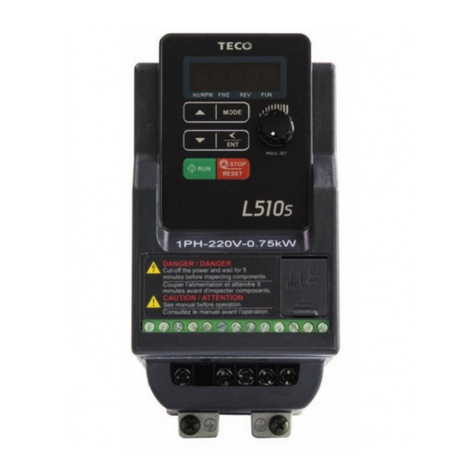
TECO
TECO L510S Series Quick manual
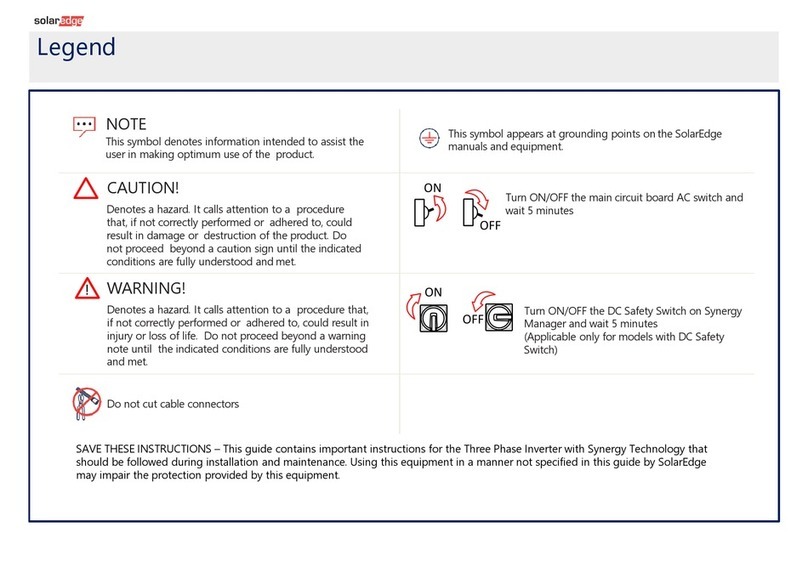
SolarEdge
SolarEdge SE3K manual

Mitsubishi
Mitsubishi FR-F720-00046-NA instruction manual
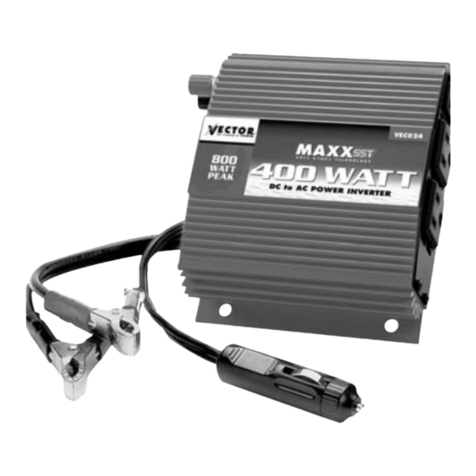
Vector
Vector VEC024 Owner's manual & warranty
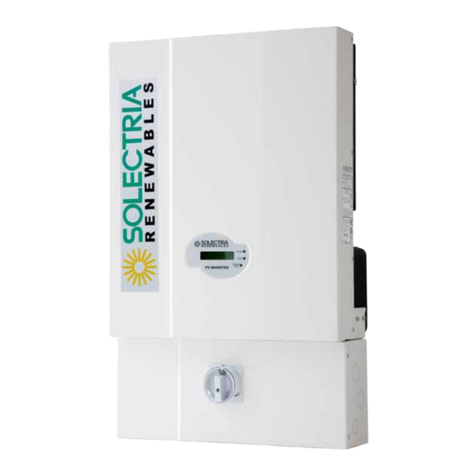
Solectria Renewables
Solectria Renewables PVI 6500 Installation and operation manual
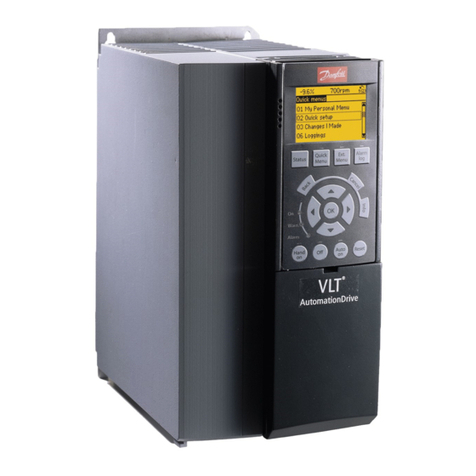
Danfoss
Danfoss VLT AutomationDrive FC 300 Design guide

